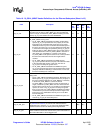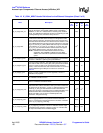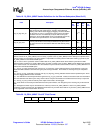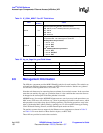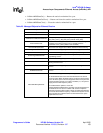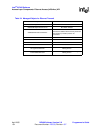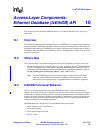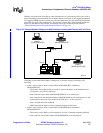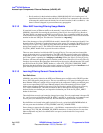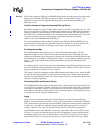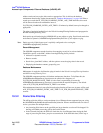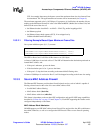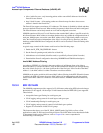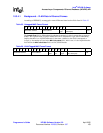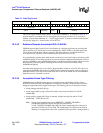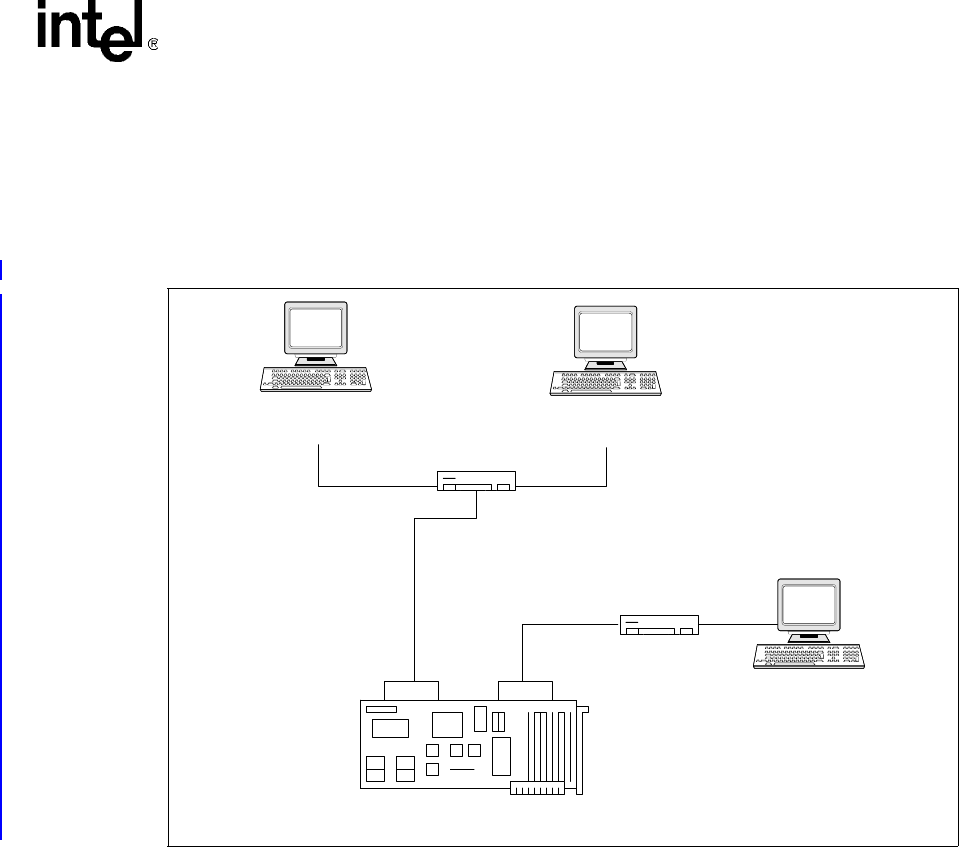
Intel
®
IXP400 Software
Access-Layer Components: Ethernet Database (IxEthDB) API
Programmer’s Guide IXP400 Software Version 2.0 April 2005
Document Number: 252539, Revision: 007 157
Filtering can also be done according to some characteristics of a frame received on a port, such as
frames exceeding a maximum frame size or frames that do not include VLAN tagging information.
For example, EthDB provides a facility to set the maximum frame size that should be accepted for
each NPE-based port. This means that if a port receives a frame that is larger than the maximum
frame size, that frame will be filtered. An example of this type of filtering can be found in
“Filtering Example Based Upon Maximum Frame Size” on page 161.
Assuming we start with blank (empty) learning trees, a possible scenario of filtering is the
following:
• Node 1 sends a frame to Node 3 (source MAC 00:00:00:00:00:01, destination
00:00:00:00:00:03)
— The frame is forwarded by Hub A to Node 2 (ignores the frame, as the destination does
not match its own address) and Port 0
— Port 0 adds the source address (00:00:00:00:00:00:01) to its learning tree
— Port 0 searches for the destination address (00:00:00:00:00:03) in its learning tree, it is not
found therefore the frame is forwarded to the other ports – in this case Port 1
— Port 1 forwards the frame to Hub B
— Hub B forwards the frame to Node 3, intended recipient of the frame
• Node 2 sends a frame to Node 1 (source MAC 00:00:00:00:00:02, destination
00:00:00:00:00:01)
— The frame is sent to Hub A, which forwards it to Node 1 (intended recipient) and Port 0
— Port 0 adds the source MAC address (00:00:00:00:00:02) to its learning tree
Figure 54. Example Network Diagram for MAC Address Learning and Filtering with Two Ports
Hub A
Node 2
[00:00:00:00:00:02]
Node 1
[00:00:00:00:00:01]
Intel
®
IXP425 Network Processor
Port 0 Port 1
[00:00:00:00:00:03]
Hub B
Node 3
B2370-01



